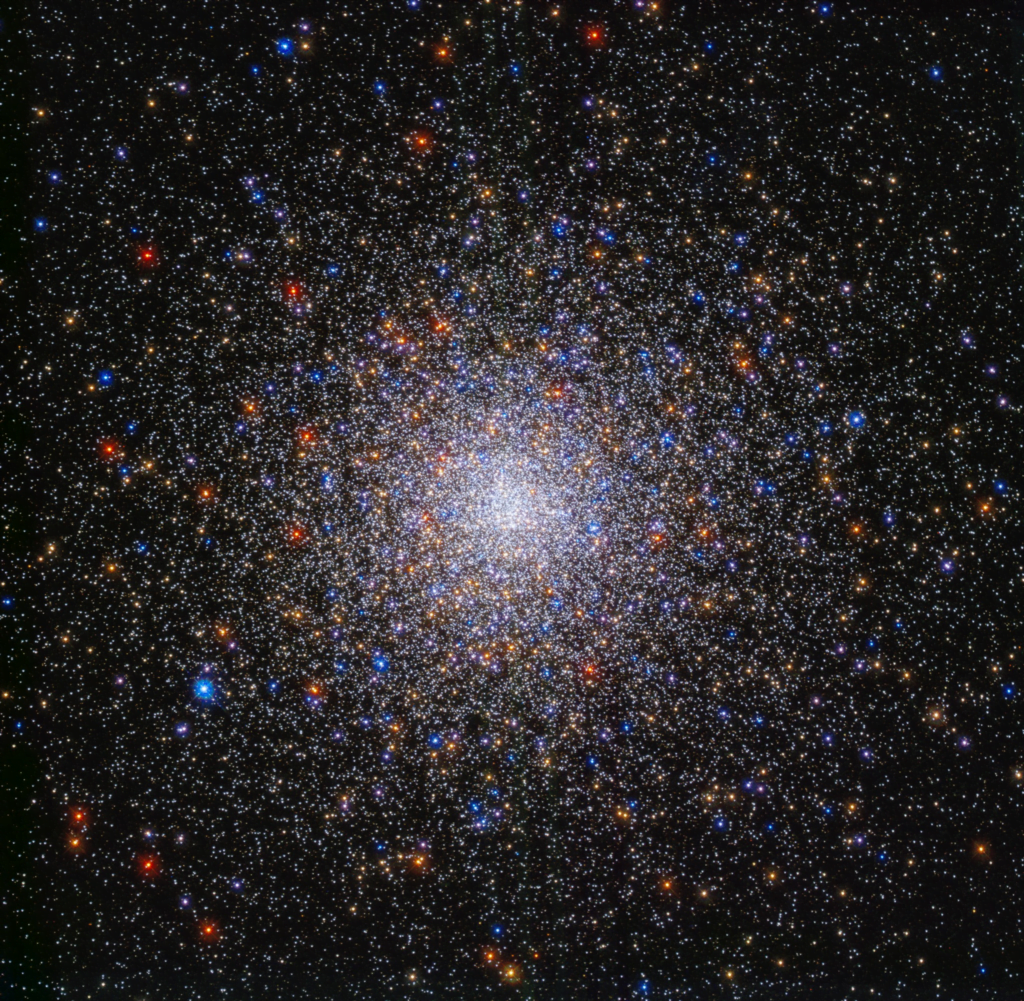Milky way galaxy is then home of billions of stars. This sparkling new Hubble image shows the brilliant globular cluster M14 where stars are very closely set.
Home to over 150,000 stars, M14 played host to a nova in the summer of 1938. A nova is a sudden stellar eruption where a star’s brightness increases by a factor of 10,000 in just a few days, before fading back to normal. Some of the supernova can be observed from our planet if it happens closer.
The Messier Catalog is a stargazing resource that includes many fascinating astronomical sights from the northern hemisphere, which are particularly visible in March – an ideal time to try and find them all for a MessierMarathon! We’re sharing new Hubble images of Messier objects so you can “stargaze” right from your screen. Try to find out a globular cluster and observe thousands of stars bio naked eyes. By finding them , feel the vastness of creation.
Image credit: NASA, ESA, and F. D’Antona (INAF, Osservatorio Astronomico di Roma); Image Processing: Gladys Kober

Hubble has imaged most of the objects in the Messier Catalog
Hubble has imaged most of the objects in the Messier catalog, which includes fascinating astronomical targets that can be seen from the northern hemisphere.
You can even try to find them all for a Messier Marathon event in March’s ideal viewing conditions! Over the next few days, we’ll unveil new Hubble images of Messier objects so you can “stargaze” right from your screen no matter where you are. Just enjoy these beautiful image of the heaven.
First Take a Look, this newly released Hubble image shows M55 – a loosely concentrated globular star cluster that sits about 20,000 light-years away from earth.
M55 is tricky to spot from the ground, and even in skies with low light pollution and viewed through binoculars, it will only appear as a round hazy patch. Hubble’s view above Earth’s atmosphere resolves individual stars within the cluster.
This image only shows a portion of M55, but the whole cluster stretches about 100 light-years in diameter! Yeah , this is big!
Image credit: NASA, ESA, A. Sarajedini (Florida Atlantic University), and M. Libralato (STScI, ESA, JWST); Image Processing: Gladys Kober

Hubble Telescope has a new view of M80 globular cluster
Just in time for the 2023 MessierMarathon, Hubble has a new view of M80 to share to all.
M80 is one of the densest of the known globular clusters in the Milky Way. It’s about 28,000 light-years away from early in the constellation Scorpius and contains hundreds of thousands of stars. Truely , a tight cluster.
In 1860, M80 was the site of a nova – or an explosion from a white dwarf star.
The Messier Catalog is a stargazing resource that includes many fascinating astronomical sights from the northern hemisphere, which are particularly visible in March – an ideal time to try and find them all for a Messier Marathon! We’re sharing new Hubble images of Messier objects so you can “stargaze” from anywhere. Just try to find out one.
Image credit: NASA, ESA, and G. Piotto (Universita degli Studi di Padova); Image Processing: Gladys Kober

The James Web Telescope discovered tripled galaxy
This Webb image features a special galaxy that appears three times. Why? There’s a galaxy cluster here whose mass and gravity are so great that time and space around it gets warped. This magnifies, multiplies, and distorts distant galaxies behind the cluster, such as the one highlighted in the three white boxes. The effect is known as gravitational lensing.
The tripled galaxy contains an exploding star, part of a Type Ia (pronounced One-A) supernova. These supernovae have a standard brightness, but this particular galaxy’s supernova has been magnified by the cluster to look closer and brighter. By comparing the standard brightness with how bright this supernova appears to be, we can calculate the true distance of its galaxy.
Credit: ESA/Webb, NASA & CSA, P. Kelly




